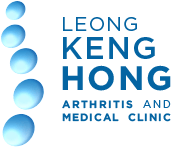What is Scleroderma
Scleroderma, more commonly known as systematic sclerosis, is an autoimmune disease that primarily affects the skin. It is commonly characterised by the hardening of patches of skin. It is not contagious, infectious or cancerous. It can be categorised into 2 specific group – limited or diffused.
Limited Scleroderma
This form of sclerosis mainly affects the face, hands, fingers, arms and legs. The sclerosis is localised and is often contained to several patches of hardened and dry skin around specific areas of the body.
Diffuse Scleroderma
The presence of hardened dry skin is widespread throughout the body. It can affect any part of the body and it is not contained to a specific area of the body. It could also affect major internal organs such as the heart, lungs, liver, kidney and even the blood vessels and nervous system.

